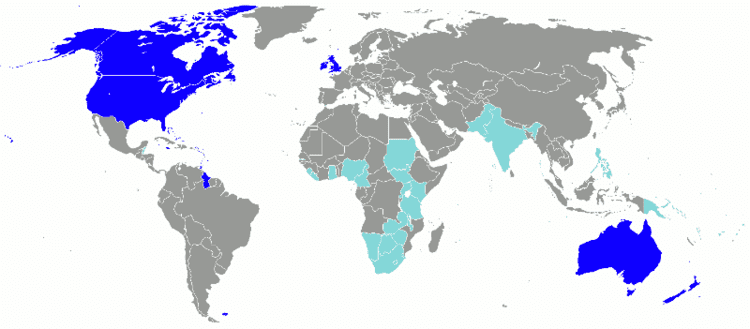Main immigrant languages Amharic ‹See TfD› | ||
 | ||
Sign languages Eritrean Sign Language, older sign languages | ||
The main languages spoken in Eritrea are Tigrinya, Tigre and Standard Arabic. Linguistic demography is uncertain due to a lack of reliable official statistics. SIL Ethnologue estimates that there are 2.5 million primary speakers of Tigrinya, and 1.0 million primary speakers of Tigre as of 2006, corresponding to about 50% and 20% of total residents, respectively. The remaining residents primarily speak other languages from the Afro-Asiatic family, with a minority speaking Nilo-Saharan or Indo-European languages.
Contents
Ethno-linguistic demographics
According to linguists, the first Afro-Asiatic-speaking populations arrived in the region during the Neolithic period from the family's proposed urheimat ("original homeland") in the Nile Valley, or the Near East. Other scholars propose that the Afro-Asiatic family developed in situ in the Horn, with its speakers subsequently dispersing from there.
Eritrea's population today comprises nine ethnic groups, most of whom speak languages from the Semitic and Cushitic branches of the Afro-Asiatic family.
Estimates of numbers of speakers given below are from SIL Ethnologue unless otherwise noted.
Afro-Asiatic languages
The South Semitic (North Ethopic) languages spoken in Eritrea are Tigrinya, Tigre, and Dahlik (formerly considered a dialect of Tigre). Together, they are spoken by around 70% of local residents:
Other Afro-Asiatic languages belonging to the family's Cushitic branch are also spoken in the country. They are spoken by around 10% of residents and include:
Nilo-Saharan languages
In addition, languages belonging to the Nilo-Saharan language family are spoken as a mother tongue by the Kunama and Nara Nilotic ethnic minorities that live in the north and northwestern part of the country. Around 187,000 individuals speak the Kunama language, while around 81,400 people speak the Nara language. As of 2006, this corresponds with around 3.5% and 1.5%, respectively, of total residents.
Foreign languages
Arabic is mostly found in the form of Standard Arabic as an educational language taught in primary and secondary schools, but there are native speakers of dialectal variants of Arabic, as follows:
Italian was introduced in the 19th century by the colonial authorities in Italian Eritrea. It serves as the mother tongue of Italian Eritreans. English was introduced in the 1940s under the British military administration of Italian Eritrea. It is now used as the de facto working language.
Official status
The 1997 Constitution of Eritrea does not define any official languages. It states that "the equality of all Eritrean languages is guaranteed" without providing a conclusive list of the languages in question. The CIA Factbook cites Tigrinya, Arabic and English as official languages, alongside ethnic Eritrean languages like Tigre, Afar and other Cushitic languages, as well as the Nilo-Saharan Kunama. SIL Ethnologue lists Tigrinya as the de facto language of national identity, Arabic as the de facto national language, and English as the de facto working language. The Eritrean embassy in Sweden says "The main working languages are Tigrigna and Arabic. English is the medium of instruction from middle school level upwards.".
It is mention on the website of the Eritrean embassy in London, United Kingdom: “Afar, Arabic, Tigre and Kunama are the national and official languages of Eritrea.” The website of the Eritrean embassy in Dublin, Ireland says:“The people of Eritrea speak Afar. The main national and official language of Eritrea is Arabic.”
Writing and literacy
According to the Ministry of Information of Eritrea, an estimated 80% of the country's population is literate.
In terms of writing systems, Eritrea's principal orthography is Ge'ez, Latin script and Arabic script. Ge'ez is employed as an abugida for the two most spoken languages in the country: Tigrinya and Tigre. It first came into usage in the 6th and 5th centuries BC as an abjad to transcribe the Semitic Ge'ez language. Ge'ez now serves as the liturgical language of the Eritrean Orthodox Tewahedo Church and Ethiopian Orthodox Tewahedo Churches. The Latin script is used to write the majority of the country's other languages excluding Arabic. The Arabic script has also been used to write Afar, Beja, Saho and Tigre in the past. However, Tigre is mostly written in Ge'ez script now while the Latin script is used to write the other languages. For example, Qafar Feera, a modified Latin script, serves as an orthography for transcribing Afar.
